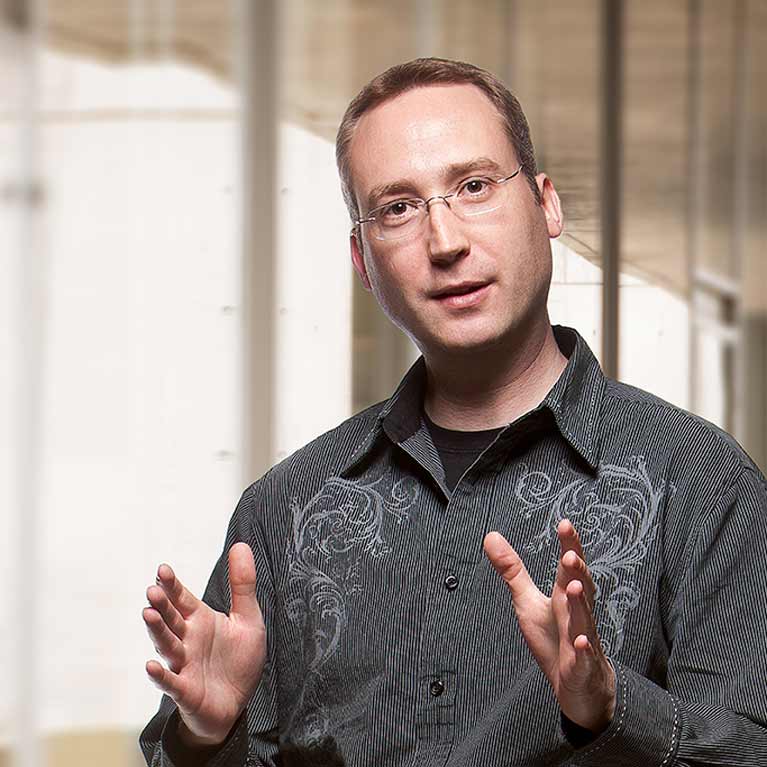Overview
Home - Science - Research Centers - Waitt Advanced Biophotonics Center

Light-based technologies have transformed the study of biological systems at all levels, from individual cells to entire organs. Prominent examples of such technologies include genetically encoded indicators, such as green fluorescent protein (2008 Nobel Prize), super-resolved fluorescence microscopy (2014 Nobel Prize), ultrashort high-intensity lasers (2018 Nobel Prize) and optogenetics. In addition to basic research, light-based technologies have changed the way patients are diagnosed, monitored and treated. Fiber-optic endoscope systems, pulse oximeters and photodynamic cancer therapy are just a few examples of such technologies that are now standard of care. In fact, the global market for biophotonics, the convergence of optical and biosciences, has seen robust and continual growth and is projected to reach $59.9B by 2022.
Cognizant of the transformative potential of biophotonics, the Salk Institute has made and continues to make strategic investments in this area. However, creating a new and vibrant center would not have been possible without philanthropic support and risk-taking. In 2008, the Waitt Foundation and its founder, Ted Waitt, made a $20M donation toward creating such a center at the Salk Institute that consists of faculty labs and a core (a shared resource that provides the Salk community with an array of imaging technologies, specialized equipment and services). A few years later, on February 9, 2011, the Waitt Advanced Biophotonics Center (WABC) officially opened its doors. Since then, donations by Salk Institute Board of Trustees members Daniel and Martina Lewis and the Jesse & Caryl Philips Foundation have provided additional funds for biophotonics fellowships and seed grants.
These investments have paid dividends in multiple ways. In addition to training the next generation of cross-disciplinary scientists, publishing research findings and technologies, WABC scientists have advanced our understanding of biological processes in health and disease, including viral infection, aging, stroke and cancer. As of August 2019, the four inaugural faculty labs and core members have published more than 100 research articles in leading scientific journals (over three dozen in Cell, Science, Nature and their sister journals). Research programs directed by WABC faculty have been recognized with major awards and prizes, including three NIH Director’s New Innovator Awards, several BRAIN Initiative and foundation awards, and NIH Transformative Research, EUREKA, and DARPA awards. Awarded funds in turn have supported high-risk, high-reward research toward next-generation, light-based technologies and fundamental biological discoveries. Additionally, the WABC’s core has emerged as an indispensable hub that supports high-impact research in over 40 faculty labs at the Salk Institute, as well as neighboring institutions and biotech companies. Both WABC faculty labs and core members have generated intellectual property (IP) and fostered new industry partnerships. The core, for example, has partnered with ZEISS to provide interested scientists access to state-of-the-art commercial and pre-release microscopy equipment that benefits their research.
Biophotonics has been and continues to be a rapidly emerging, highly interdisciplinary field. It drives and draws on developments in microscopy and probes, computational methods, and biological tools. The current roster of WABC faculty reflects this diversity and synergism. It comprises experts in high-resolution microscopy and circuit tracing, computational modeling and artificial intelligence, as well as molecular and genetic engineering. In addition to their track record of outstanding individual performance, these investigators are highly interactive, with over 20 cross-disciplinary publications since 2011. Building on these strengths, and with future philanthropic support, our goal is to further grow the WABC into a comprehensive Center for Technology Innovation (CTI). CTI’s mission will be to develop, validate and disseminate next-generation tools that enable researchers worldwide to make groundbreaking biological discoveries that help prevent, detect, diagnose and treat human disease and disability.
“Progress in science depends on new techniques, new discoveries and new ideas, probably in that order.”
Sydney Brenner, PhD
Salk Distinguished Professor and Nobel Laureate